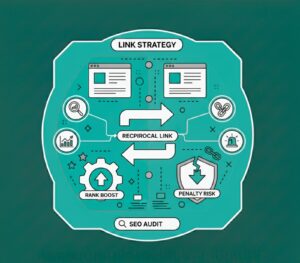Content Chunking Explained: Benefits, Techniques & Why Marketers Should Care
Blogs | Category
Written By: Lauren Davison
Introduction
Content Chunking is a simple and powerful technique. It transforms long, dense copies into bite-sized, digestible sections. This lets your audience actually read. For mid-to-high-end UK businesses to provide enterprise professional services, chunked content reduces friction. This improves comprehension and lifts measurable ROI from marketing campaigns.
Chunking solves pain points by improving readability, digital content optimisation and the UX. It is relevant across web pages, long-form blogs, e-learning modules and email campaigns. This helps the users to skim, learn or decide.
Table of Contents
What Is Content Chunking?
Definition and Purpose
Content chunking is the practice of breaking long text into smaller, grouped pieces. This helps readers scan, understand and remember information faster. Each “chunk” has a single purpose, a headline, a short paragraph, a bullet list, and an image. They together create a structured content flow that guides users to action.
This approach makes reading faster, easier and more engaging for users. It is what attention-starved customers expect today.
Why Content Chunking Works
Cognitive load theory explains why chunking works. Human short-term memory can only hold a limited number of items at once. Presenting information in small, meaningful groups reduces mental effort. This increases comprehension. For learners and buyers, it means better retention, faster decision-making and fewer drop-offs. During the critical journeys like product comparison, signups, or checkout, chunking is useful.
Benefits of Content Chunking
Enhanced Readability
Short paragraphs, clear headings and lists make the content skimmable. For marketing teams, that translates into content that gets read, not scanned. Cleaner formatting helps your calls-to-action stand out. Skimmable content reduces bounce rates by keeping readers engaged.
Better User Experience (UX)
Chunked content respects how people read online. It helps to scan, hunt for signals, then read. Structured content improves satisfaction, lowers frustration, and increases time on page. For mobile-first audiences, bite-sized content is non-negotiable. It comes in shorter lines, concise paragraphs and clear visual breaks. This supports on-the-go reading.
SEO Advantages
Search engines reward useful, and well-structured content. Headings, lists and descriptive subheadings create a content hierarchy. This helps crawlers and users alike. Chunked pages also increase dwell time and reduce pogo-sticking. Both bring positive signals for rankings. When combined with targeted keyword placement, you get content that is discoverable.
How to Implement Content Chunking
Use Headings and Subheadings
Break content into clear sections using H2S, H3S and H4S. Each heading should promise a single value — a question answer, a benefit or a step. For example, an e-commerce product page might use headings for “How it Works”, and “FAQ”. Good headings improve content organisation and make pages scannable.
Bullet Points & Numbered Lists
Convert long sentences into short lists. Lists are perfect for highlighting features, steps, or quick takeaways. They are quick to read and easy to remember. Use numbered lists for processes and bullets for benefits or feature sets.
Short Paragraphs & Sentences
Aim for paragraphs of 1–3 sentences. Sentences should be active. Shorter lines help readers maintain momentum and make your content more skimmable. This is a core readability improvement technique that benefits audiences.
Visual Chunking
Use images, infographics, tables or short videos to separate text blocks. Visuals reinforce key messages and provide a momentary cognitive break that improves retention. For SaaS tutorials, embed short explainer videos or GIFs between chunks. This shows the processes rather than describing them.
When Should You Use Content Chunking?
Blogs and Articles
Long-form content benefits: use a table of contents, sectioned subheadings and pull-quotes. Chunked blog posts increase readability and make it easier to repurpose sections. It is in the form of emails, social posts or landing page snippets.
E-Learning & Educational Material
Chunking is essential for learning design. Break modules into micro-lessons with a single aim each. Short quizzes and recap bullets reinforce recall and completion rates.
Emails & Newsletters
Short, scannable sections increase click-through rates. Start with a clear one-line value statement, use bolded subheads, and end with a focused CTA. For busy marketing managers and business decision-makers, this format is far more effective. It is more than dense paragraph emails.
Common Mistakes to Avoid
Over-Chopping Content
Too many tiny chunks without narrative flow can feel staccato and disjointed. Balance brevity with coherence. Each chunk should connect to the next and support an argument or journey
Ignoring Visuals
Chunking is strongest when combined with visuals. Throwing headlines and lists at a page without images, icons, or tables can still feel heavy. Use supportive graphics or whitespace to make chunks breathe.
Poor Headings
Generic headings like “Introduction” or “Overview” do not help skimming. Make headings specific and benefit-driven. “How chunking boosts onboarding completion” is better than “Why it matters.”
Practical Checklist – Quick Wins for Marketers:
Audit a high-traffic page, add H3 subheads and convert long paragraphs to max chunks.
Convert dense sections into 3–5 bullet points with a short lead-in sentence.
Add one visual or pull-quote every 300–400 words to interrupt long stretches of text.
Use analytics to test: A/B split a chunked vs. unchunked page and measure time on page and conversion lift.
Apply the same rules to email subject lines and preview text to improve open rates and CTR.
Conclusion
Content Chunking is not a formatting trick; it is a conversion tool. When you prioritise organisation, skimmable content and UX content, you reduce cognitive load. Increase and improve the chances that a reader will take the desired action. Adopting chunked content for mid-to-high-end UK businesses is an impactful way to engage.
Start implementing content chunking today to boost engagement and retention. If you want a hands-on audit, we can review your highest-value pages. This creates a chunking playbook and runs A/B tests to show measurable improvements. Get in touch to explore a content optimisation package designed for marketers.

Written by - Lauren Davison
Introducing Lauren – one of our content writers who has a flair for SEO and creative strategy!
With a Master’s Degree in Creative Writing, Lauren has niched down into SEO and content writing.
Outside of work, she loves watching the darts, reading and the pub on the weekend.
Want some more?
Latest Insights & News

Reciprocal Links in SEO: Do They Still Boost Rankings or Risk Penalties?
For the keyword “reciprocal links SEO,” focus on explaining how reciprocal linking works today. Reciprocal links are not harmful by default, but Google can flag excessive or manipulative link exchanges. To stay safe, only exchange links when they are contextually relevant, natural, and valuable to users.

SEO as the Foundation of Digital Growth: Why It’s More Than Just a Marketing Tactic
When focusing on “SEO for business growth,” highlight how SEO directly contributes to long-term scalability. Modern SEO goes beyond ranking—it boosts brand visibility, qualified traffic, customer trust, and conversion opportunities. To optimize effectively, ensure your content covers user intent, builds topical authority, and leverages technical SEO elements like fast loading, mobile-friendly design, and structured data.

AEO Mastery: Step-by-Step Guide to Building AI Citations & Boosting Visibility
When targeting the keyword “AEO Guide to Building AI Citations & Boosting Visibility,” focus on Authoritative Engine Optimization (AEO) principles. AI-driven search requires clear, structured, and entity-rich content.
